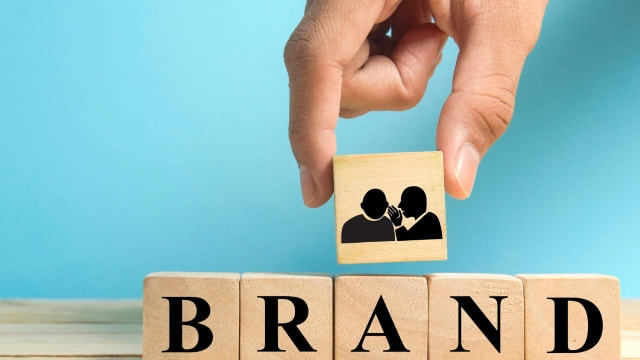|
I saw a business cartoon recently that made me laugh, then grimace. It showed two men standing in side-by-side kiosks with signs advertising their competing services. One vendor’s sign said low-quality leads. The other read brand building. The punchline was that the line for buying bad leads was a mile long. Not a soul was in line to build their brand. It’s a common story, particularly for midsize and smaller companies that believe they simply can’t afford the luxury of brand marketing if they want to grow. Unfortunately, this approach often results in businesses that find themselves on a hamster wheel constantly chasing short-term sales rather than investing in long-term growth. Brand building is not lead generation. It’s trust generation. It makes your leads better and your funnel stronger. It can help you to avoid commodification and demand a higher price. It can make the difference in attracting and retaining top talent as well. Don't settle for low-quality leads I’ve worked with many CMOs whose narrow focus on MQLs and SQLs (marketing- and sales-qualified leads, respectively) has mostly led to LQLs. Low-quality leads. Those are the leads that are often a source of friction and finger-pointing between marketing and sales. Even in the best of circumstances, leads that don’t convert are not uncommon. The average MQL — a lead that has shown some level of interest in your product — only becomes an SQL — an actual sales prospect — about 10-15 percent of the time on average. That’s true for medium- and high-consideration purchases whether B2C (e.g., a new refrigerator) or B2B (e.g., a SaaS subscription). But the conversion rate varies greatly based on the quality of the MQL. And while businesses may look at any number of reasons for leads being of low quality — especially from sources like email campaigns and trade shows — the biggest reason is that companies haven’t built sufficient brand equity to win their buyer's trust. Brand trust reduces friction all along the buyer's journey. While the value of brand trust can be difficult to measure, one approximation comes in the form of the goodwill line of a business’s balance sheet. When one company acquires another for a price higher than net fair value, the difference is called goodwill. The acquired company’s brand equity is one of the key components of goodwill. Today, more than half of the corporations in the S&P 500 have goodwill balances of more than $10 billion from their acquisitions. That’s a lot of money paid for brand trust. Avoiding the coffee-spoon approach to brand measurement When T.S. Eliot’s J. Alfred Prufrock famously laments that he “has measured out my life in coffee spoons,” he is expressing regret for all the opportunities he has lost by leading a safe, predictable life. So it often goes with brand-building programs. Scrutinizing short-term costs too closely can come at the expense of long-term ambitions. Put another way, if you measure your ROI in coffee spoons, you may end up bemoaning lost opportunities just as Prufrock did. For this reason, some businesses choose not to measure their investment in brand awareness at all. In fact, I know of one CMO — whose B2B tech company was just acquired for $3 billion — who says the decision to cease all measurement of branding efforts was one of the biggest keys to his success. The CMO split his company’s marketing spend into two parts: demand and brand. While the demand-generation budget was closely measured for ROI, the brand-building spend — representing up to 30 percent of the total marketing budget — wasn’t measured. The team was able to focus entirely on improving brand awareness and trust rather than constantly worrying about ROI. Over time, the CMO concluded, this led to greater ambitions, higher returns and superior growth. Brand lift for the long haul It is crucial not to attempt to tie branding programs directly to sales on a day-to-day basis. That dooms your efforts to failure. But there are metrics to help you see whether you’re on the right track in building awareness and trust for your brand through trust signals. These include: • Direct and branded search traffic — a steady increase in direct traffic, branded search traffic or both is a clear sign that your brand marketing efforts are working. • Media visibility and share of voice (SOV) — if your business has specific industry rivals in its sights, improvements in your brand’s SOV can be a valuable measure of progress in gaining market awareness. • Search and social media presence — increasing your organic search volume and your social media engagement and referral traffic are sure signs you are growing your audience and building trust. • Market surveys and qualitative research — there’s no better way to determine if your brand messaging is hitting its mark or falling on deaf ears than by asking the people you’re trying to reach. Compared to lead-generation programs, it can be very difficult to trace business results directly to specific brand-building efforts. If someone comes across your company’s name in a news article, for example, it might result in a branded search weeks later. Over time, however, if you don’t begin to see a significant lift in these metrics, it could be a sign that your brand’s message isn’t resonating or that your product isn’t capturing the public’s interest. Source: https://www.msn.com/ Image: Shutterstock
0 Comments
Leave a Reply. |
Membership is open to businesses and organizations interested in increasing visibility and brand awareness in Westchester County and surrounding areas.
Archives
May 2024
Categories
All
|


 RSS Feed
RSS Feed